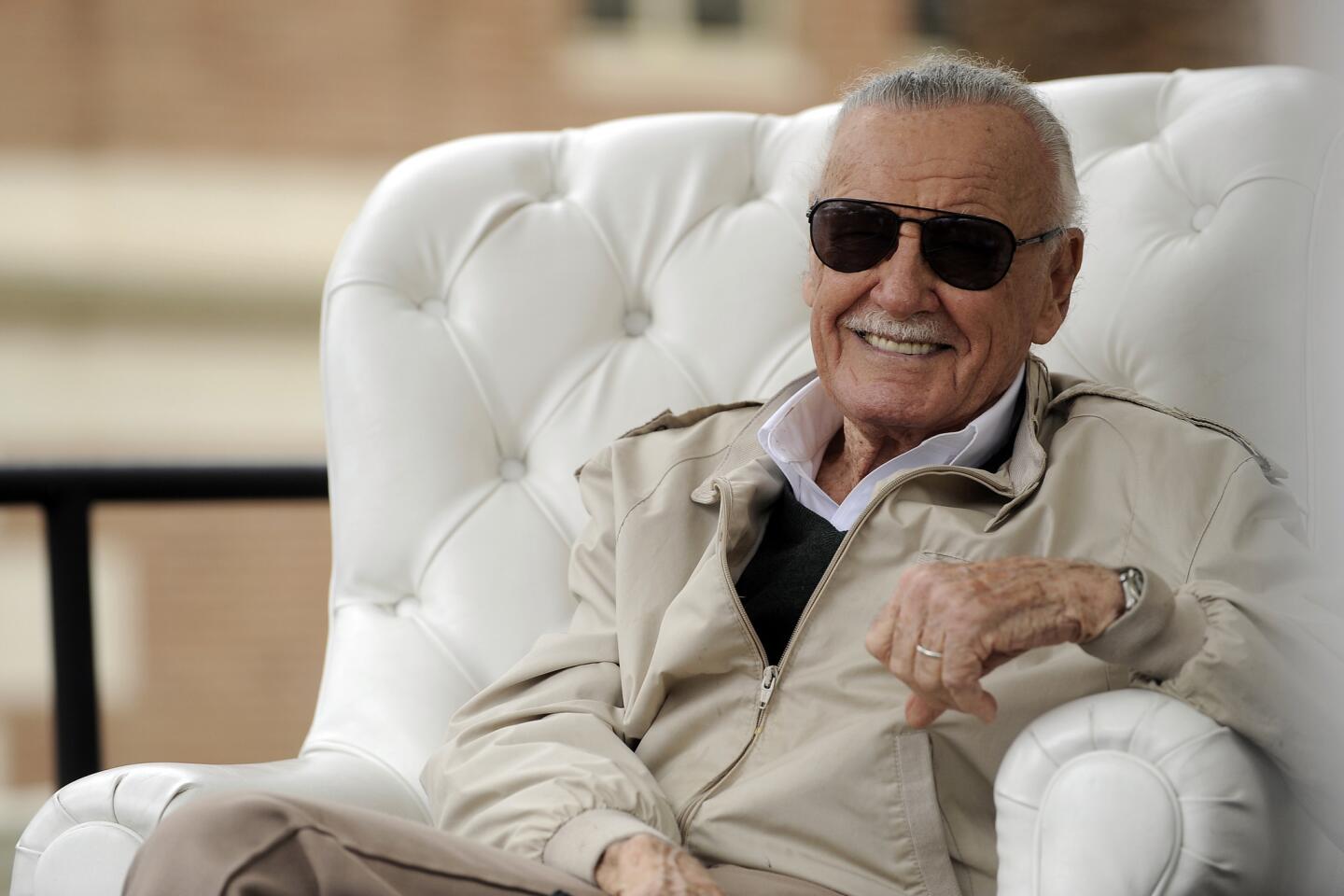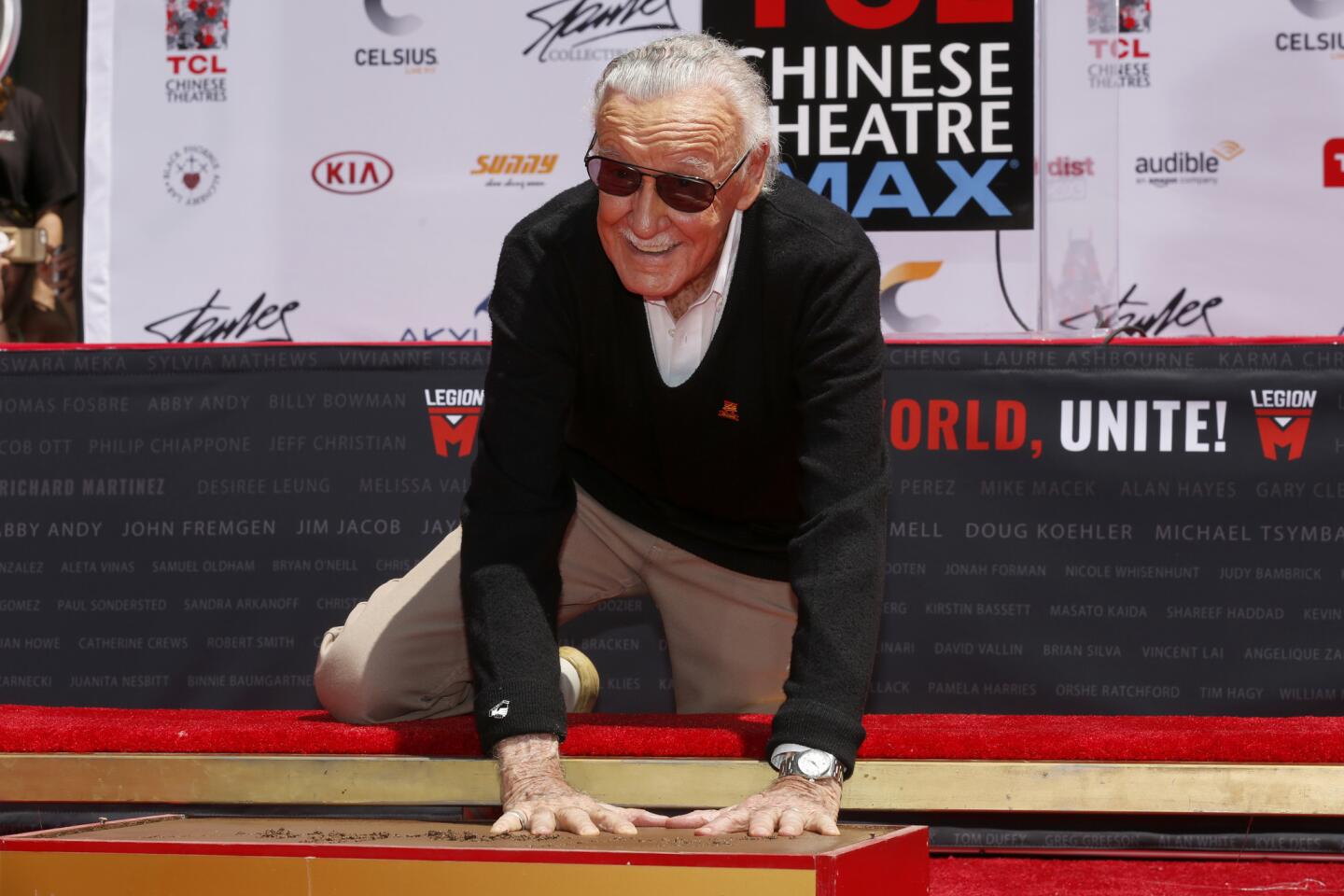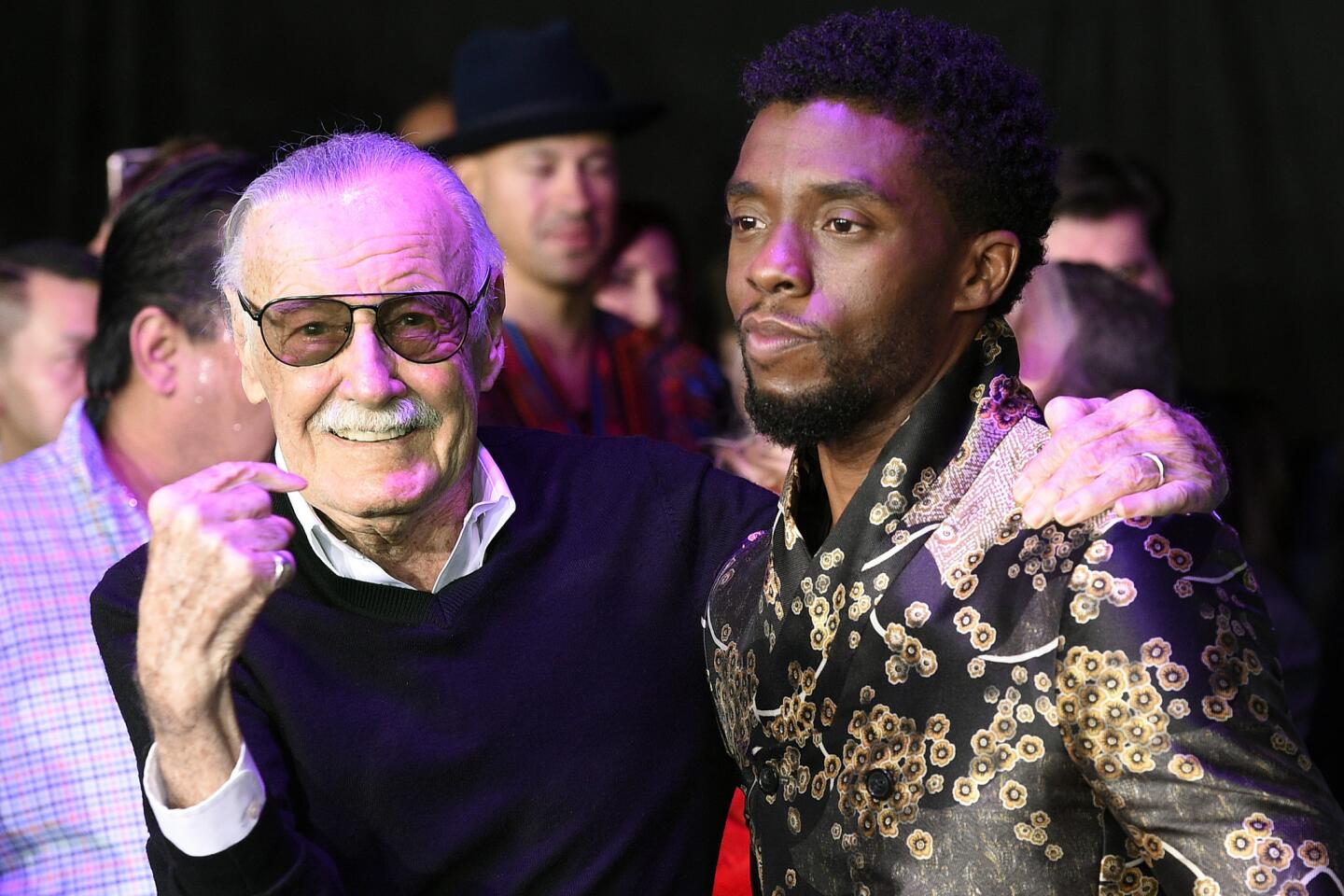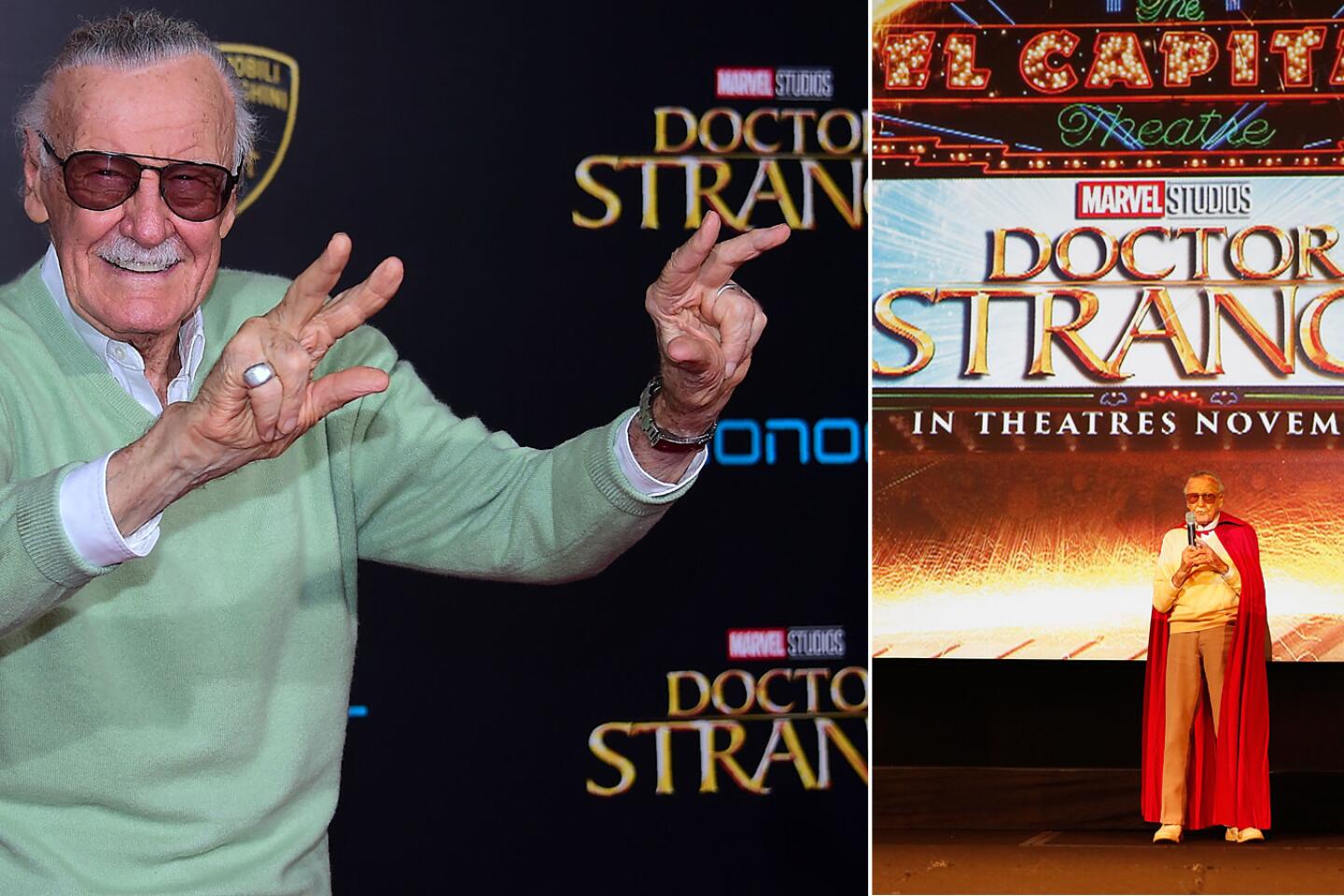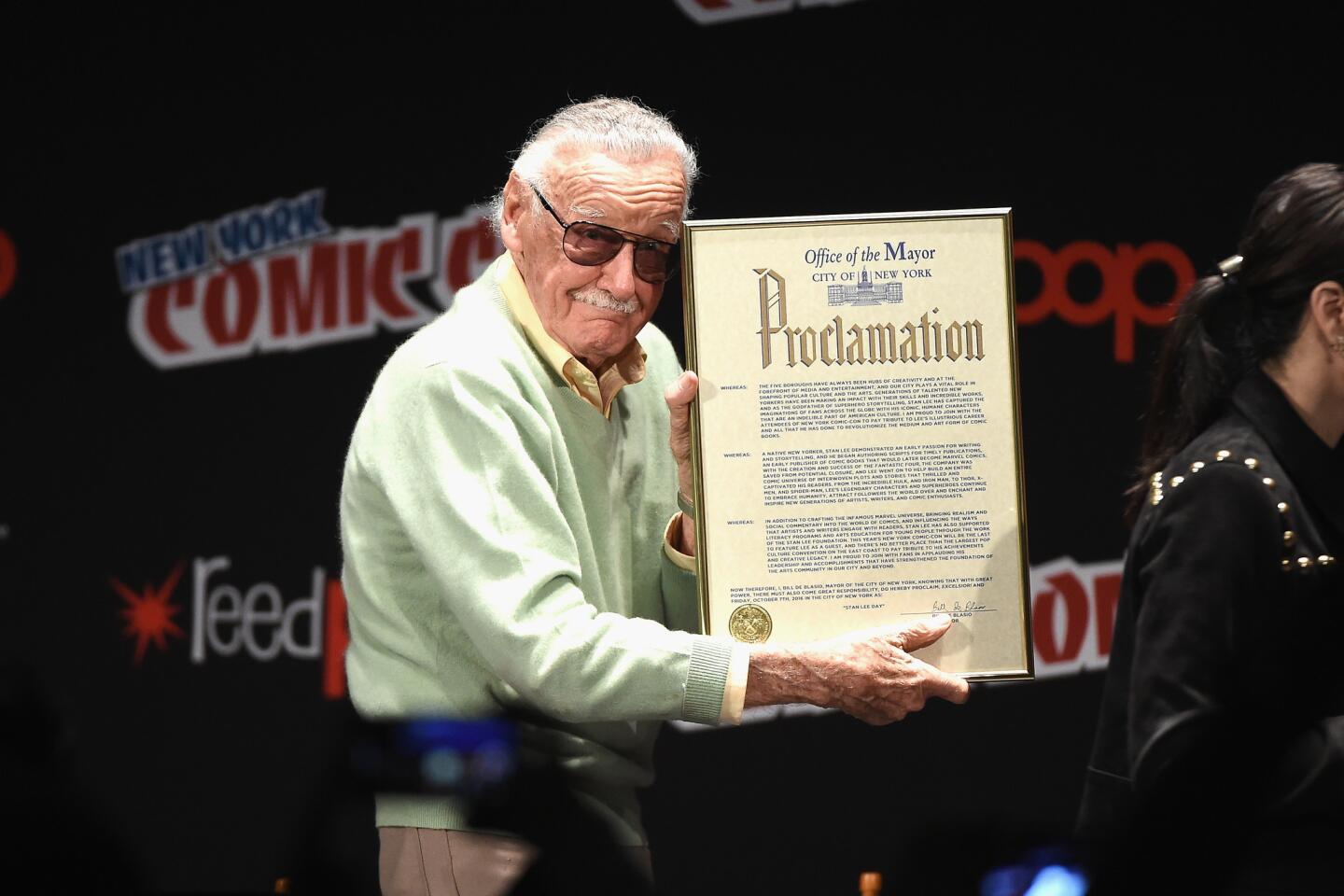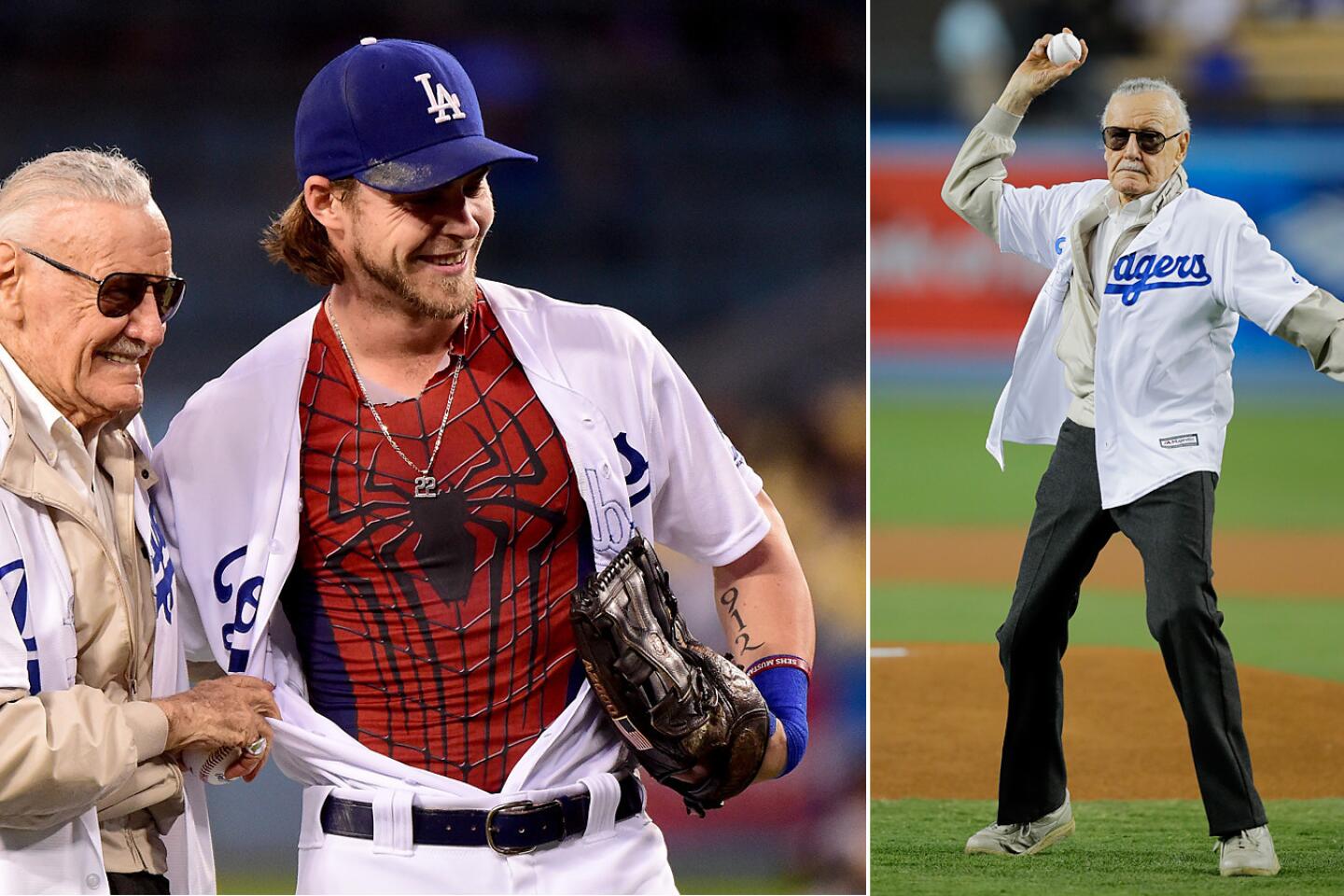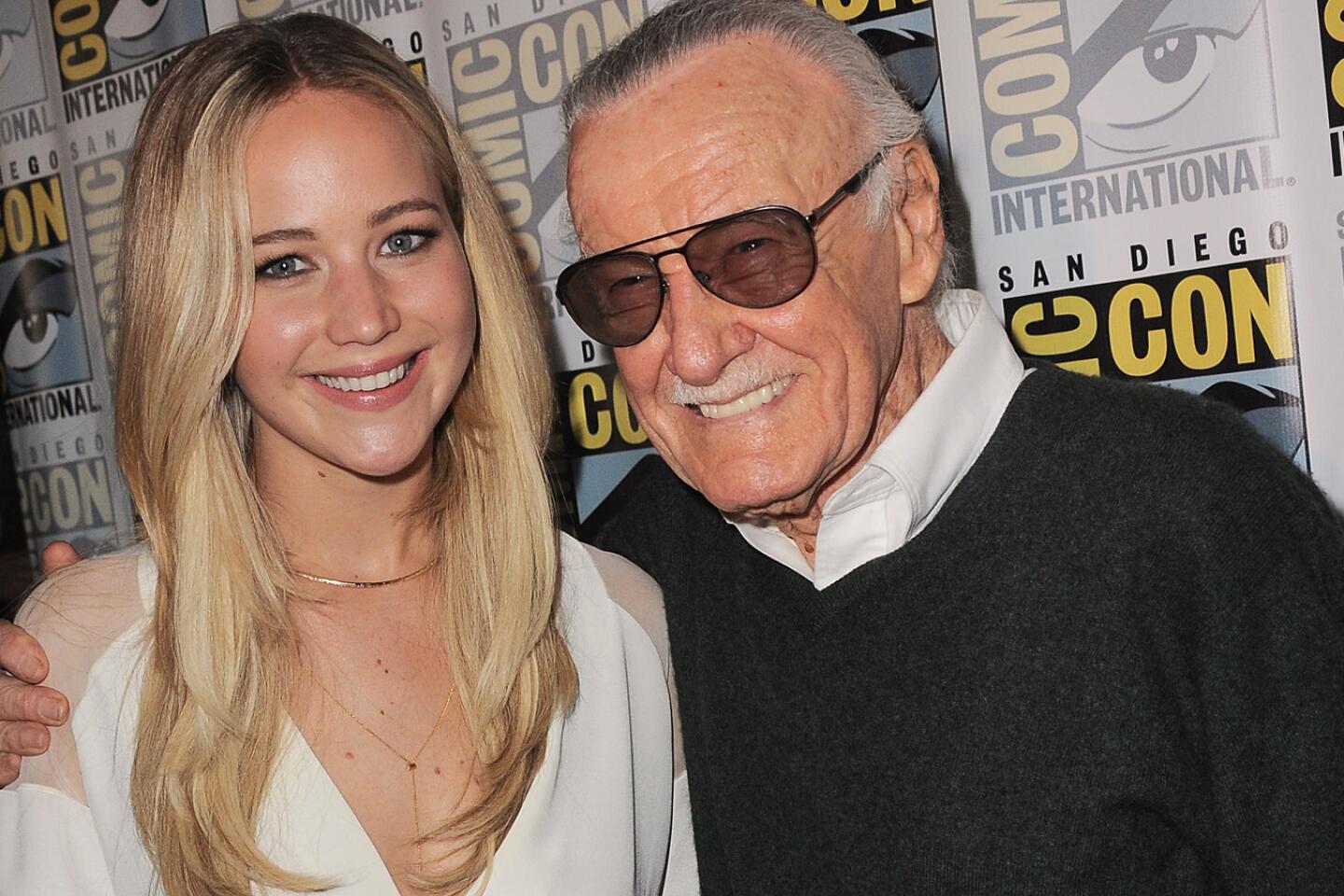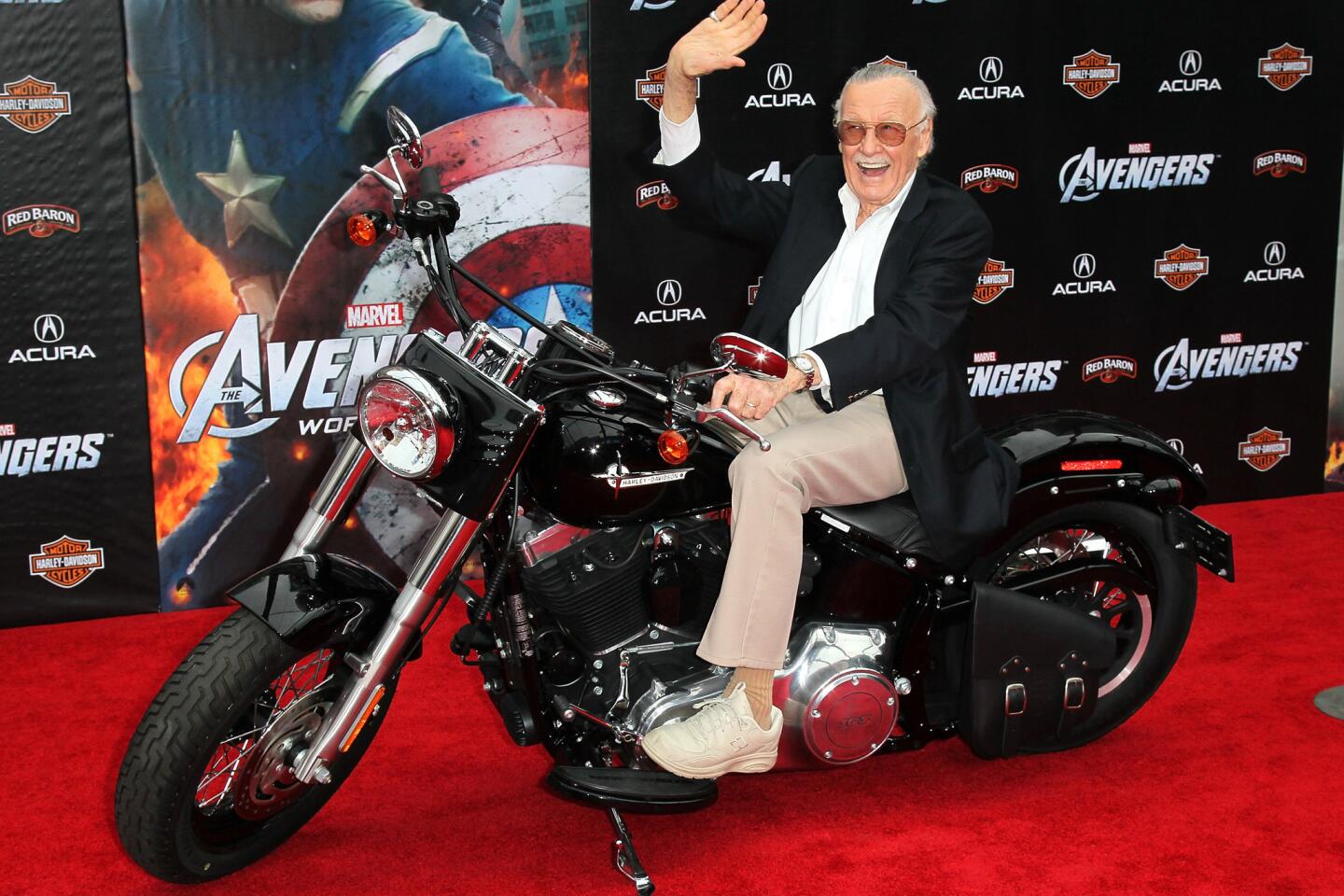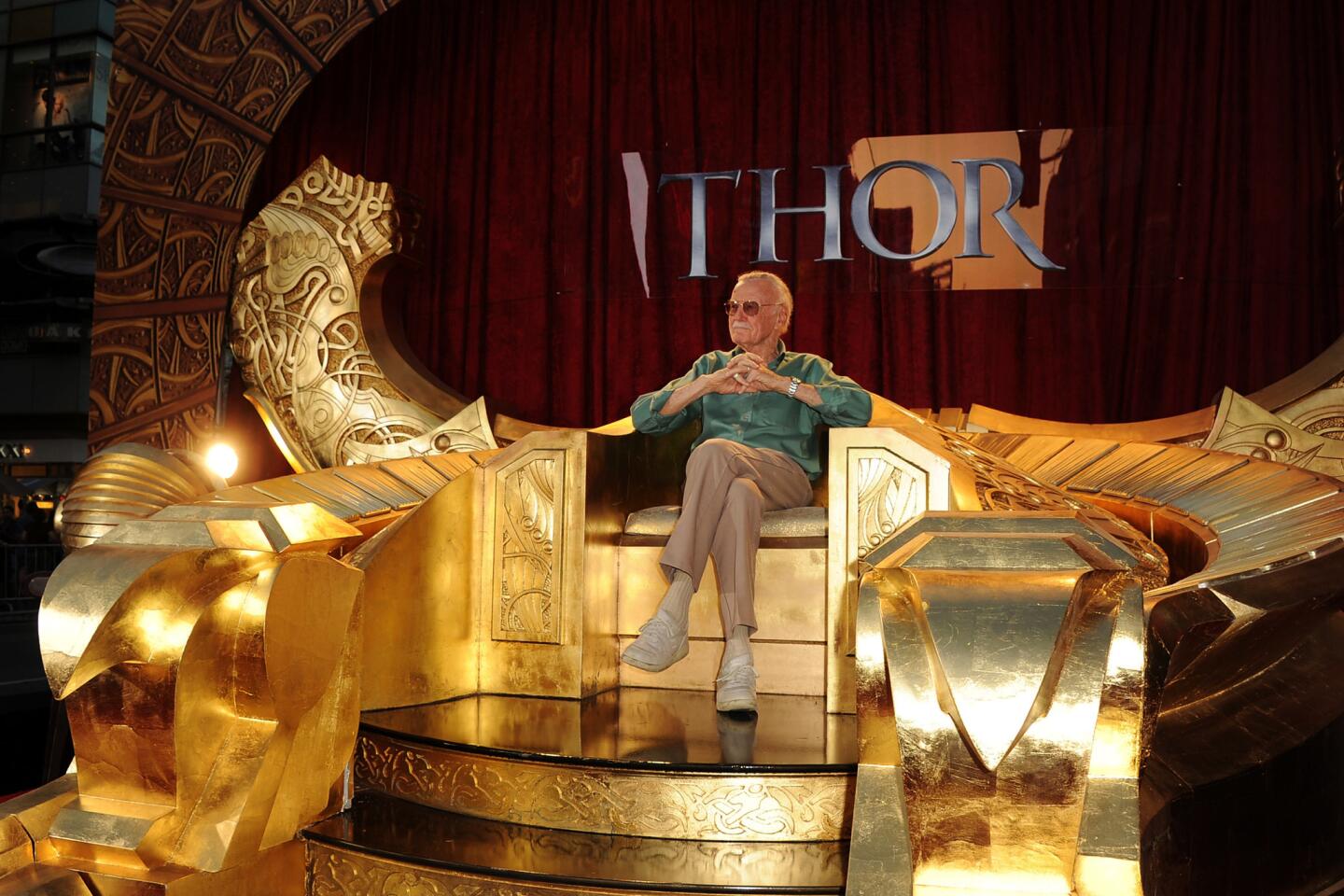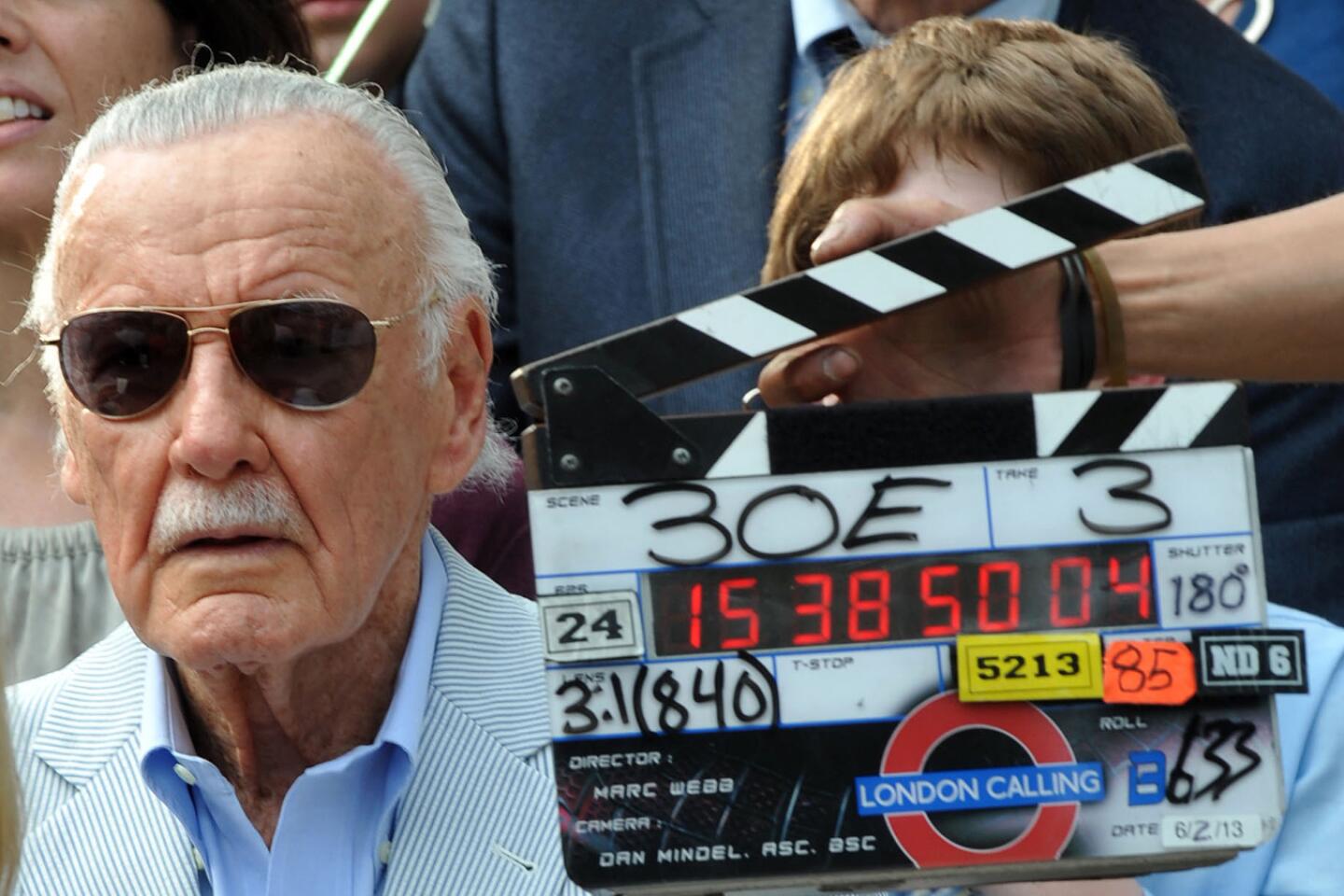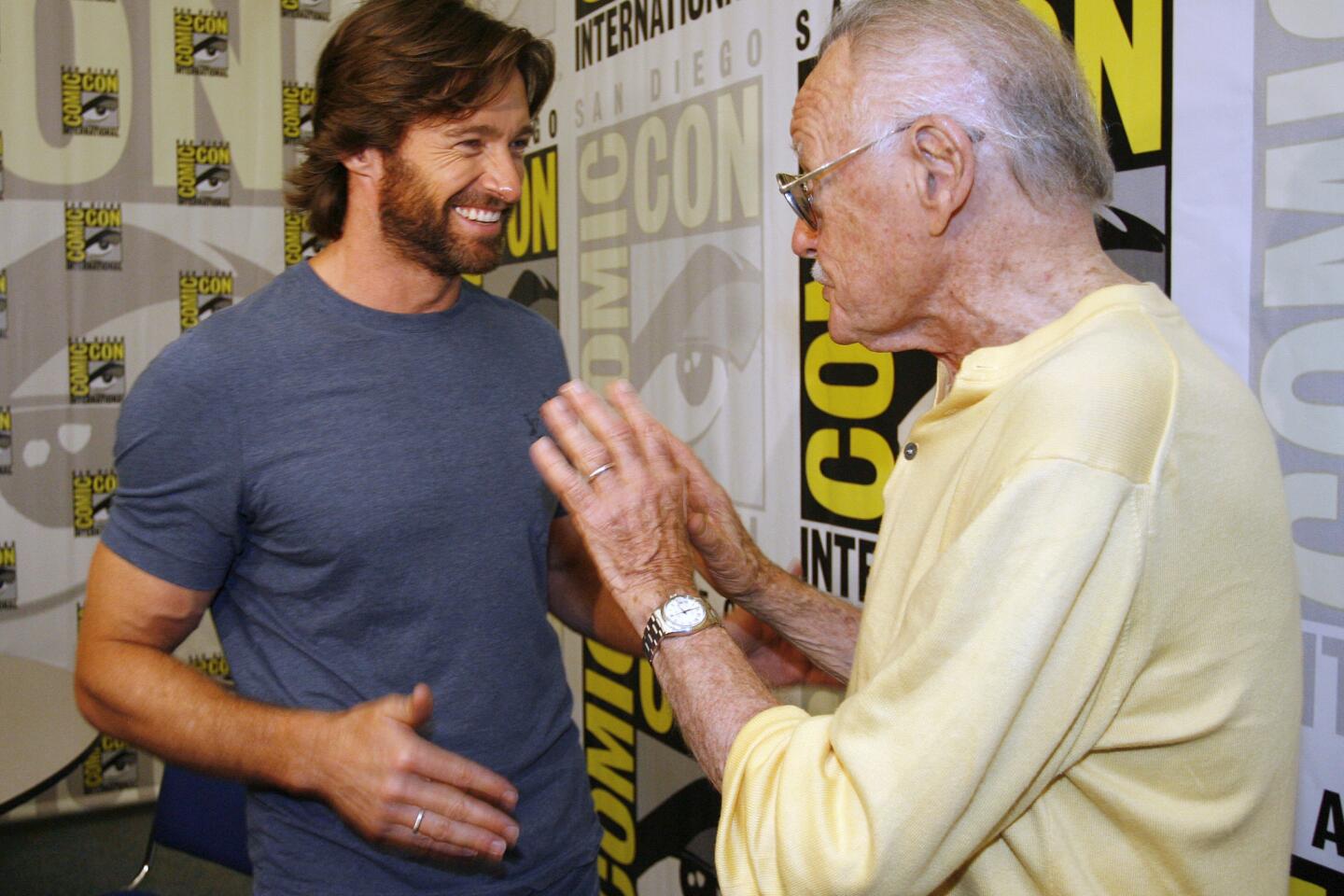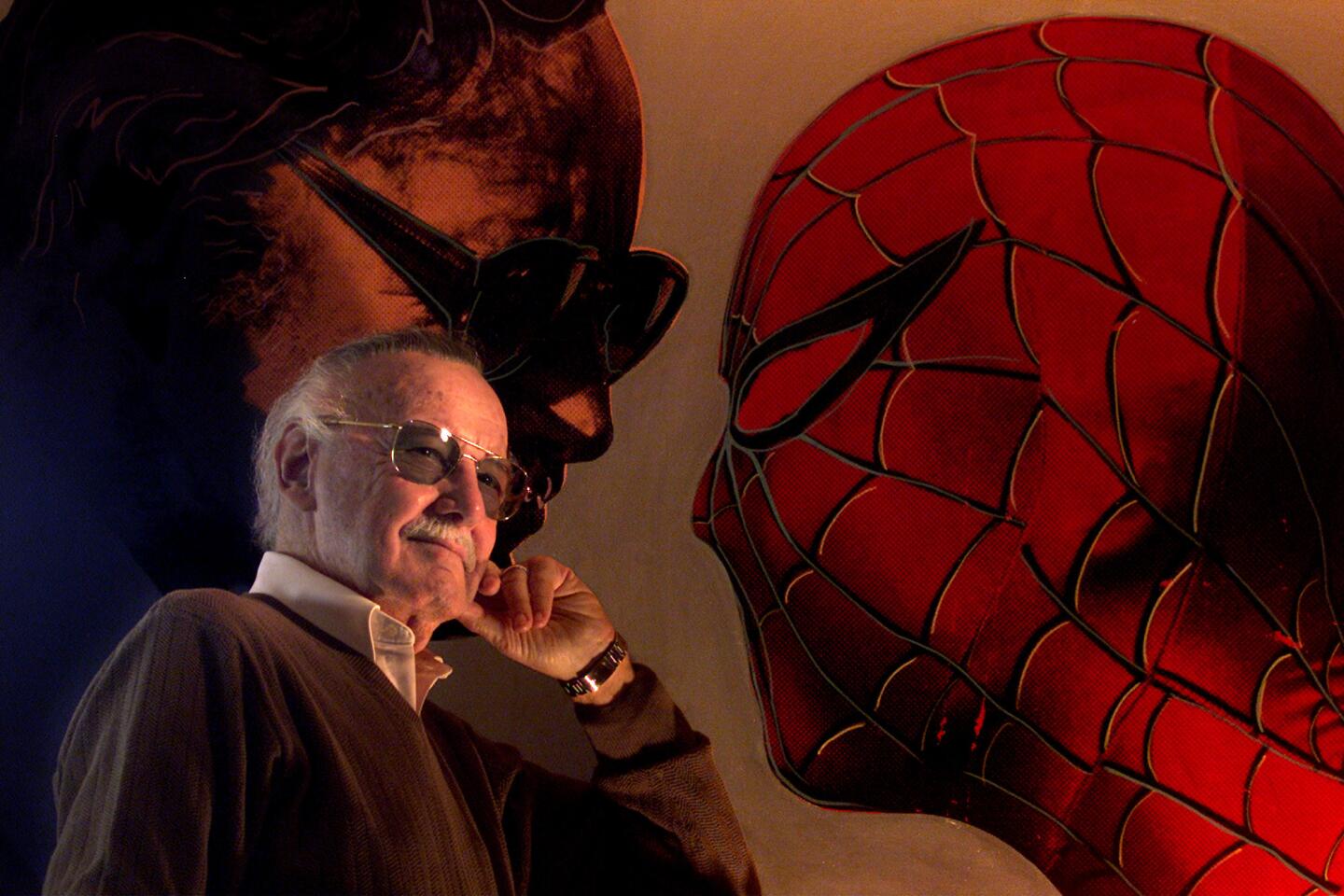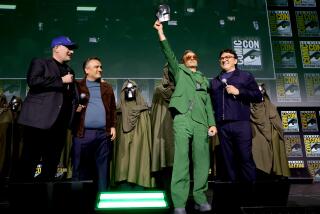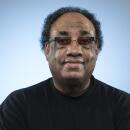From the Archives: Face to face with Stan Lee
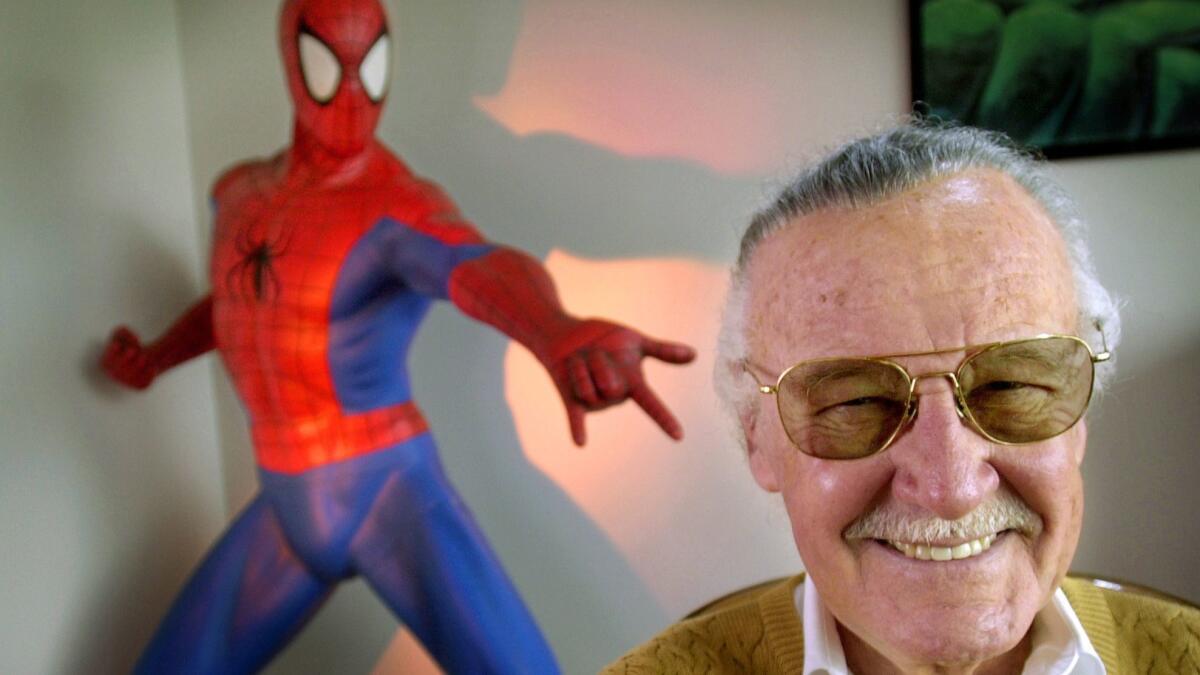
- Share via
Editors note: Comic-book legend Stan Lee died Monday at Cedars-Sinai Medical Center in Los Angeles at age 95. The story below is an archived interview with Lee, which ran in The Times on Sept. 4, 1988, and details Lee’s early days of trying to make movies and TV shows out of his Marvel properties.
When Stan Lee talks, little white balloons with words don’t come out of his mouth.
Lee does not go to work in outlandish costumes. He does not have a secret identity. And he doesn’t have a hidden wish to battle the forces of evil.
Although he is known for creating comic book heroes that bash and smash their way through life, this Stan Lee is a connoisseur of African art. He used to know the five versions of the “Rubaiyat of Omar Khayyam” by heart. He still can reel off the first quatrain like an actor speaking his favorite lines.
“Wake! for morning, in the bowl of night hast flung the stone that puts the stars to flight,” quoted Lee one recent day, waving his hands as he sat in his office at Marvel Productions in Van Nuys.
Not bad for a man who is best known for employing expressions such as “BKKKOOOM!” “FTMMOOOK!” and “PTAMM!” in his works.
Lee, 65, found those words to be more than descriptive whenever one of his creations, such as the Incredible Hulk, Iron Man or the Mighty Thor, tried to move mountains. Or, rather, slammed one of their villainous opponents into one.
RELATED: The wisdom and wisecracks of Stan Lee: What he told The Times over the years »
Lee is the mind behind the superheroes that elevated Marvel Comics in the 1960s from an upstart company trying to compete with the publisher of Superman and Batman comic books to a dominant position in the comic book world. He is known for writing about heroes who had weaknesses along with their superhuman strength.
But that was a long time ago in a place far, far away — namely New York City. Although he is still the publisher of Marvel, as well as a dabbler in the daily syndicated comic strip exploits of Spider-Man, Lee is focusing more now on moving pictures than drawings.
In his other capacity as vice president of creative affairs at Marvel Productions, Lee oversees projects involving his characters, including such Saturday morning and syndicated cartoon programs as “Muppet Babies,” “Fraggle Rock” and an authorized cartoon spinoff of the film “RoboCop.”
Deadly Doctor Doom
OK, so it’s not as heart-stopping as to-the-death combat with Doctor Doom or the Dread Dormammu. This is real life. Or, more exactly, Lee’s fantasy life.
“When I was in comics, I was doing all this work that excited me, but all of that time I was thinking, ‘Wouldn’t it be great if I could get involved in movies and animation?’ ” Lee said. “So now I’m here, and that’s what I’m doing. I’m one of the most fortunate people I know.”
But it is the comics that have made Lee a star. He is sought as a speaker at comic book conventions and college campuses. And he is constantly applauded by appreciative fans who grew up with the stories he wrote.
“I have to say I’m treated very well. Sometimes it’s embarrassing, but it’s very gratifying,” Lee said. “I can’t complain. People treat me incredibly wonderful.”
When asked how he feels about the adoration, he laughed and said, “I think it’s great. I’ve always been my biggest fan.”
However, the adoration did not come without backlashes. Lee has been embroiled for the past several years in a bitter feud with his former partner and best friend, artist Jack Kirby, about who created the superheroes. Kirby, who drew many of the adventures that Lee wrote, has claimed for years that Lee stole the ideas for the Hulk, the Fantastic Four and others.
“All those characters are mine,” said Kirby, who is retired and lives in Thousand Oaks. “I brought them to Stan Lee, and he put his name on them as writer. I feel a lot of bitterness toward him.”
John Romita, another Marvel artist who worked with Lee and Kirby, said the dispute has been brewing for years. “It’s really sad that it turned out this way,” he said. “Those two were really good friends. But I don’t think Stan has a tricky bone in his body.”
Lee was uncomfortable about discussing Kirby’s allegations. “It’s totally untrue,” Lee said. “I don’t want to turn this into a cause célèbre. The people at Marvel know what the facts are, but how do you prove it? There wasn’t anyone standing around with tape recorders.”
An illustrated tribute to Stan Lee and his career »
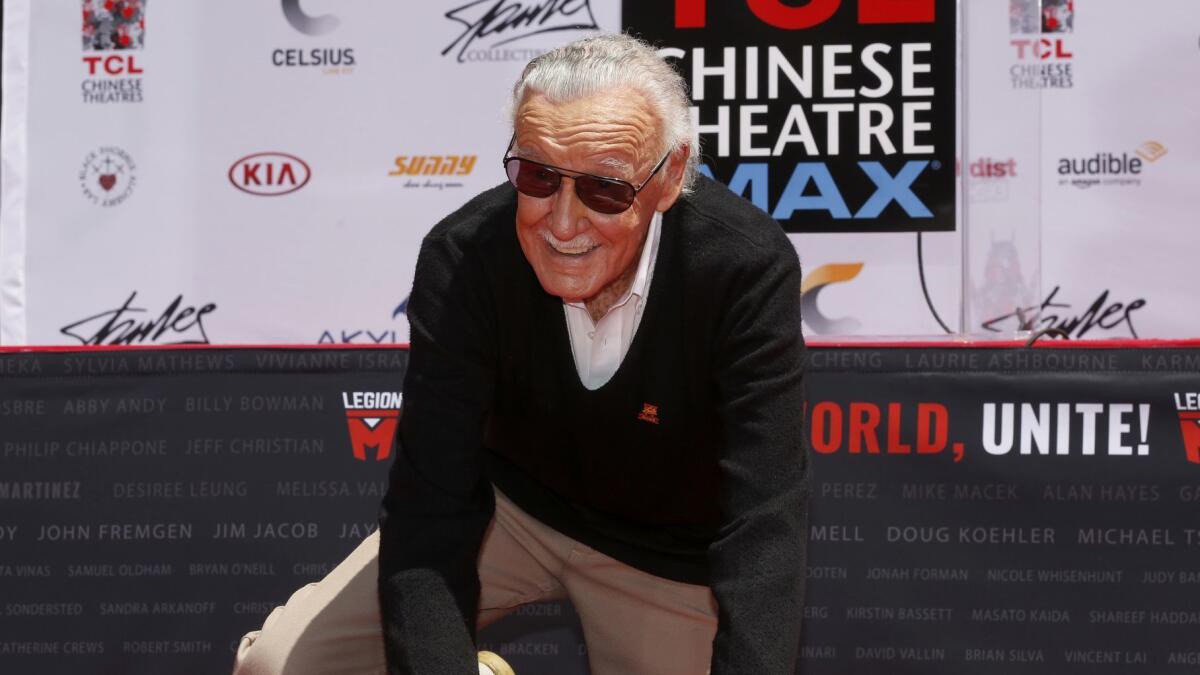
Realistic Comics
Creation of the Marvel heroes has been acknowledged by comic book buffs and industry people as revolutionary. Lee, they said, brought a gritty new realism to the form that was missing from the adventures of Superman and Batman. His heroes had real problems and displayed weaknesses that sometimes drove them to defeat.
“He had a tremendous influence on the whole genre, and he changed comic books forever,” said Roy Thomas, 47, a freelance writer who has worked for Marvel and its chief rival, DC Comics, where Superman reigns.
“Stan brought more melodrama and humor and true-to-life soap operas to the stories,” Thomas said. “Everyone picked up on that.”
Lee’s first superhero creations, the Fantastic Four, featured a man who could stretch and bend like rubber; his wife, who could become invisible; her teenage brother, the Human Torch, and their friend the Thing, a misshapen orange man who talked like a dockworker.
The quartet, which Lee introduced in 1960, was an immediate hit, Lee said. He went on to create, among others, the Incredible Hulk, a physicist struck by gamma radiation who turns into a 7-foot-tall green Goliath when irritated; Spider-Man, a teenager who started dressing in a web suit and battling bad guys after he was bitten by a radioactive spider, and the Mighty Thor, a mythological warrior in a crime-filled world.
“I aimed the books at an older audience, and the kids could buy them too,” Lee said. “I thought comics could be literature. I get my characters to talk like people really talk, and to react to things, to have their own speech patterns. It worked.”
Writes Marvel Histories
RELATED: Comic-book legend Stan Lee, co-creator of Spider-Man and Marvel heroes, dies at 95 »
Although the characters live on, Lee no longer plays a major role in shaping their ongoing sagas. The comics are still produced in New York and written by other Marvelites. A stack sits on Lee’s desk.
“I have to let those characters go and live their own lives,” Lee said. “It’s not right for me to have anything to do with the characters if I don’t have the responsibility of keeping them going.”
But he added that even though he doesn’t have day-to-day involvement, he is still a “major part of the company. If there were to be a slump in sales, I would be on the next plane to New York.”
He acts in part as a chairman of the board would, formulating philosophy but not making the daily decisions, which he leaves to Marvel’s editor-in-chief.
Lee continues to write histories of Marvel Comics and edit compilations of his work. He said he enjoys writing, as well as watching his wife, Joan, write novels. Her first book, a modern romance called “The Pleasure Palace,” sold well last year, he said.
“She’s the real writer of the family,” Lee said. “She just picked it up and does it easy as pie now. Now, if only I could teach her how to write ‘Spider-Man.’ ”
More to Read
The biggest entertainment stories
Get our big stories about Hollywood, film, television, music, arts, culture and more right in your inbox as soon as they publish.
You may occasionally receive promotional content from the Los Angeles Times.
